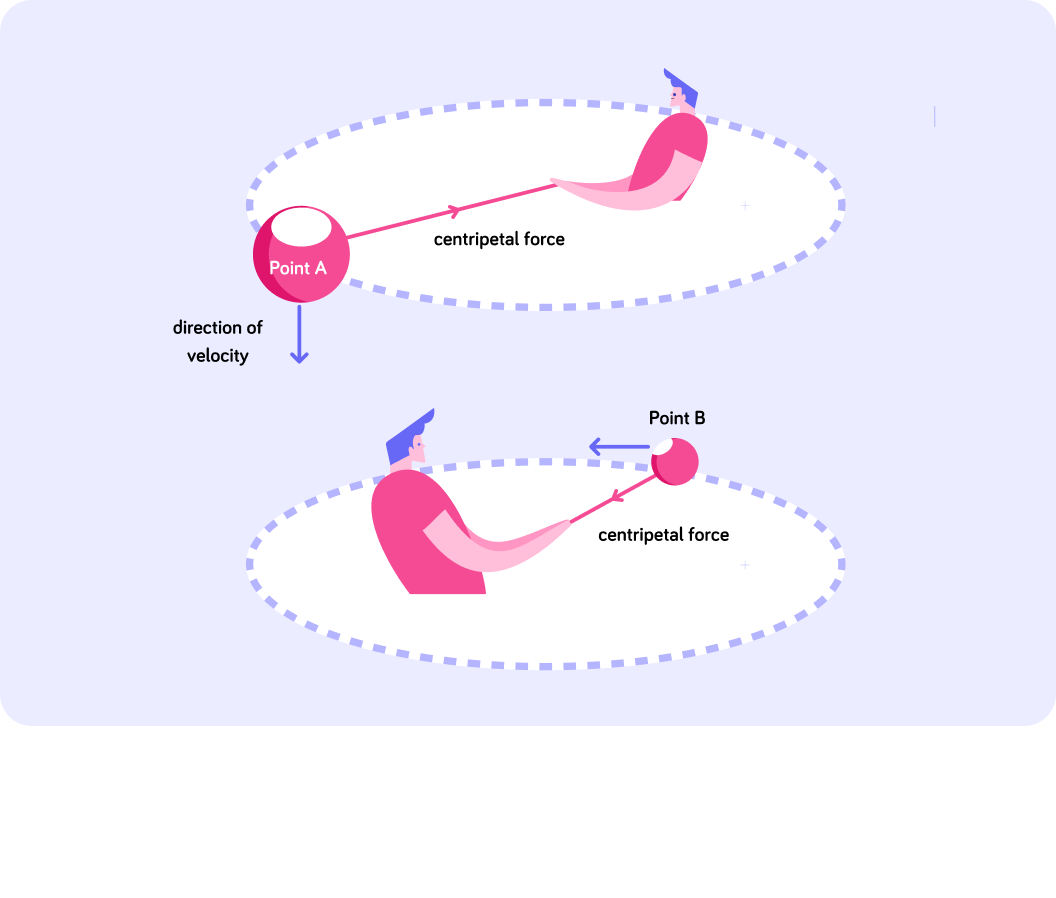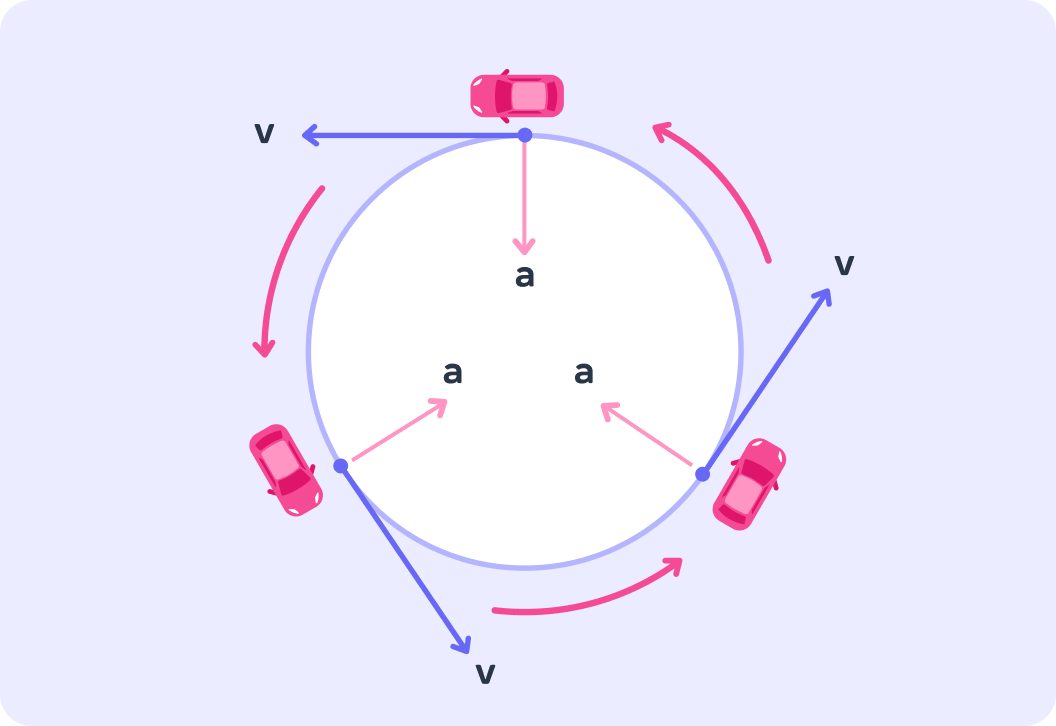YOU ARE LEARNING:
Velocity in a Circle

Velocity in a Circle
We will figure out what exactly is happening in circular motion in terms of speed, velocity and acceleration.
When an object moves in a circle, what do we call the force that acts towards the centre of the circle?

A car is travelling around a roundabout with a constant radius. Its speedometer maintains a constant reading of 5 mph. How would we describe the motion of the vehicle?

Uniform circular motion describes the motion of an object in a circle, which has a constant or uniform speed.
An object in uniform circular motion has a constant speed, but its velocity constantly changes. How are speed and velocity different?

A boy is swinging a conker in uniform circular motion. The speed of the conker between point A and point B ...
A) changes. B) stays the same.


Velocity is a vector quantity, so it has both magnitude and direction. Is it the magnitude or direction of the velocity which is different at point A and B?


At any point on the circular path of the conker, the direction of its velocity changes. Otherwise it couldn't be moving in a circle!
The magnitude of its velocity, however, remains constant. The conker is going at the same speed.

If acceleration is the rate of change of velocity, what might you conclude about any object moving in uniform circular motion?

This can be a little tricky to get your head around!
An object with a constant speed, that changes velocity, is actually always accelerating. Remember that acceleration is the rate of change of velocity. If there is a change of velocity, there must be an associated acceleration!
Acceleration is a vector quantity, so it has magnitude and a direction. Which one is it that changes when an object is accelerating in uniform circular motion?

A car is moving around a roundabout in uniform circular motion. Velocity vectors (labelled v) show the direction of motion at different points in its path. Which option best describes the direction of velocity?
A) Random. B) Tangent to the circle.


Acceleration vectors (labelled a) show the direction of acceleration at different points in its path. Which option best describes the direction of acceleration?
A) Random. B) In the same direction as velocity. C) Towards the centre of the circle.


What do you notice about the relationship between the direction of velocity and acceleration? They are ...
A) in opposite directions. B) in the same direction. C) perpendicular to one another.


The acceleration of any object in uniform circular motion is always directed towards the centre of the circle. So for an object in uniform circular motion, the direction of acceleration is constantly changing.
The centripetal force is also always directed towards the centre of the circle. Sometimes the centripetal force is actually referred to as centripetal acceleration.
